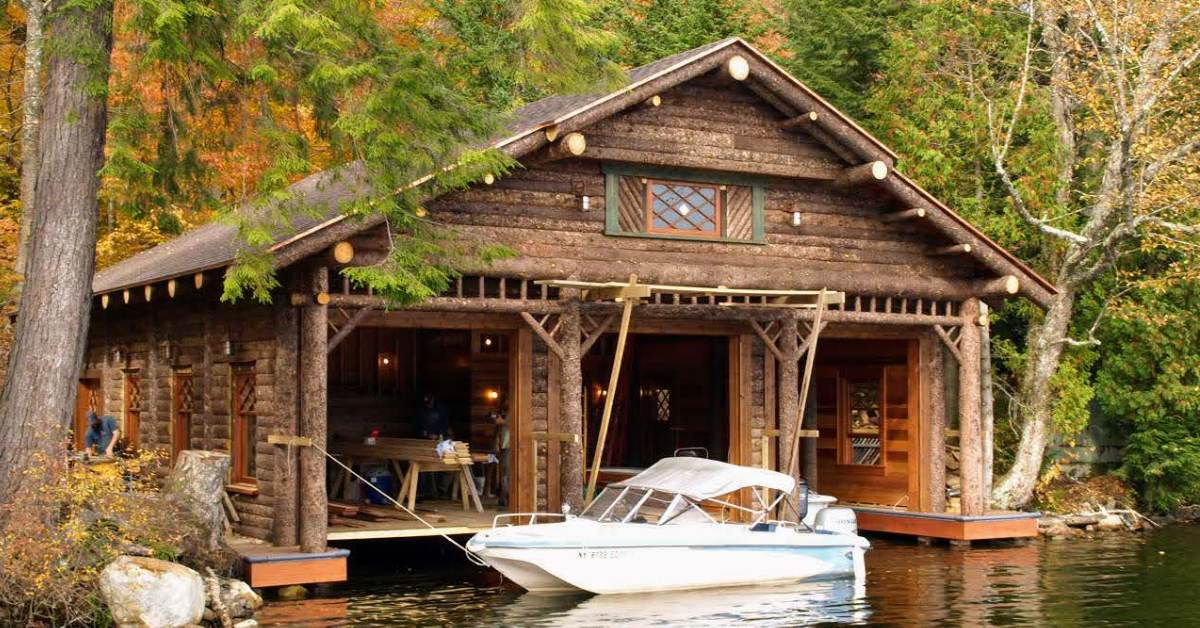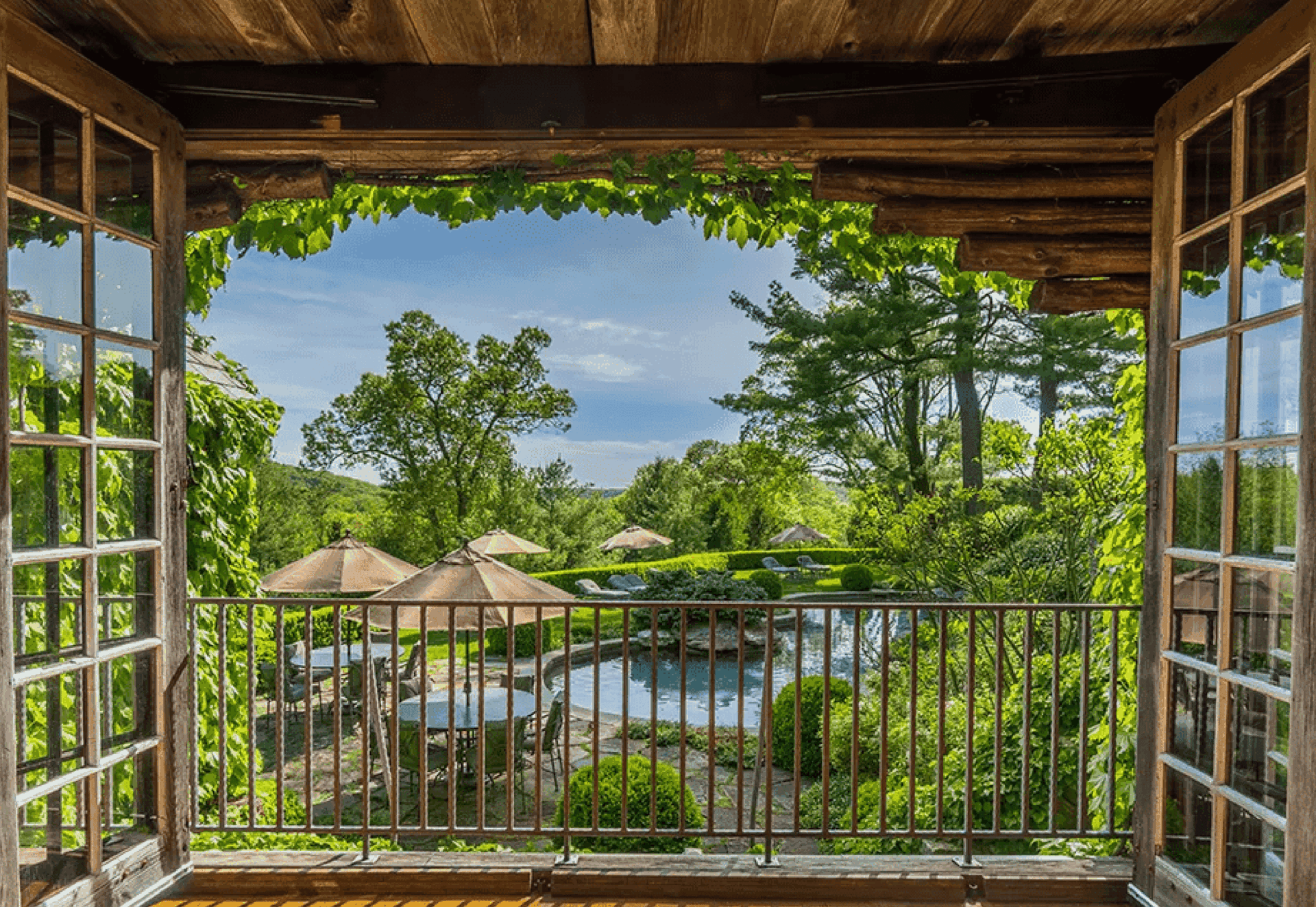Take a Deep Dive Into Great Camps Before Considering Your Own
If you’re looking to build your resort home in the Adirondacks, you might consider a rustic, yet ultra stylish and comfortable Adirondack Great Camp-style dwelling. Adirondack Great Camps and boathouses have a rich history in the region, having significantly influenced rustic-style architecture across the nation.
Learn more about the history of Adirondack Great Camps below, where we get into what constitutes a Great Camp, a timeline of how the designs have evolved over the years, and we’ll touch on where Adirondack boathouses fit in, including recent restrictions imposed. You may pick up an idea or two for what you’d like in a custom designed Great Camp of your own.

What Is an Adirondack Great Camp?
When we speak of Adirondack Great Camps we are largely referring to private camps in the Adirondacks that serve as seasonal retreats for affluent individuals and their families. Today, they’re often built as second homes for those looking to bring generations of family together in a comfortable and private location, with a back-to-nature feel.
Although rustic in style, they are also grand buildings – and, they often consist of more than one structure. Adirondack Great Camps typically incorporate multiple buildings, including a boathouse and guesthouses. They’re often built in remote locations, surrounded by woods and close to a lake.
One key aspect of Adirondack Great Camps is the seamless ability to blend into their surroundings. Great Camps are where architecture and nature can come together as one. They are constructed in such a way as to disrupt the environment as little as possible. They should look like they belong with the forest, and are a part of it in a significant and harmonious way.
This nonintrusive design plan behind Great Camps involves careful selection of materials, and thoughtful consideration as to the placement of buildings, while ideally preserving any existing vegetation on the property to the best of its ability.
Features you might see in an Adirondack Great Camp to consider incorporating into yours: rustic furnishings, granite-cut stone fireplaces, twig-and-branch decorations, handcrafted furniture, great rooms including octagonal great rooms, outdoor furniture and living spaces, gazebos, gateways and bridges, clerestory windows, exposed roof beams and trusses, walls or ceilings covered in birch bark, and tall chimneys.

A Timeline of Adirondack Great Camps Over the Years
Mid 1800s to Early 1900s
The Adirondack region in the early 19th century was not known for its farming, but the logging industry picked up, with lumber being transported by water. Hunters and other outdoor enthusiasts, including writers and creative types, also traveled by water to the Adirondacks, starting around the 1840s and 1850s.
Rustic yet comfortable vacation homes began appearing in the 1850s, as wealthy families began to take an interest in waterfront retreats and summer homes. Journalists visited the region and wrote about the pristine Adirondacks, further driving interest.
In 1858, Ralph Waldo Emerson wrote a poem called “The Adirondacks,” about his time at the Philosophers’ Camp. After the Civil War ended, further publications drew attention to the region, like the guides Adventures in the Wilderness and Camp Life in the Adirondacks, both published in 1869. Adirondacks: Illustrated followed in 1874.
Construction on what would be considered the official Adirondack Great Camps started in the 1870s. Great Camps were built along First and Second Lakes in the Fulton Chain of Lakes, and then spread to Raquette Lake, Blue Mountain Lake, and other Adirondack destinations. Also around this time, grand hotels started popping up in places like Lake George.
Camp Pine Knot is largely considered to be one of the first, and one of the most significant, Adirondack Great Camps. Built by William West Durant from 1877 to 1895, his design combined the feel of a log cabin with the elegance of a Swiss chalet. The camp demonstrated both the nonintrusive and multi building approach to a Great Camp.
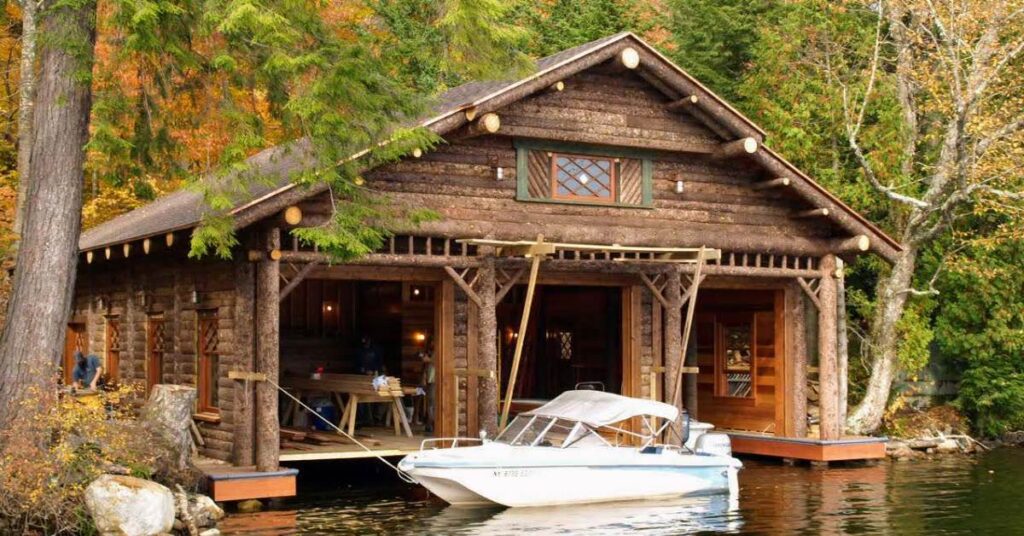
In the late 1880s, travel guides and architectural journals started covering Adirondack Great Camps – even House & Garden. William Wick, a member of the Adirondack League Club, had his highly influential Log Cabins and Cottages published in 1900; this book is largely credited with popularizing Adirondack rustic style.
Approximately 50 to 60 Great Camps were constructed between the mid-1870s and late 1930s, including Camp Cobblestone in 1901, Eagle Island Camp in 1902, and Camp Topridge on Upper St. Regis Lake in 1923; Camp Topridge is one of the largest and grandest Great Camps, with more than 60 buildings on the premises.
The Great Depression did slow down the growth of Adirondack Great Camps, but they would make a comeback again. Appreciation of Great Camps rose around the late 1940s, early 1950s. Interest in history in general, and historic preservation of buildings, became more front and center in the minds of Americans.
World War II paused Great Camp growth again, as did automobiles and airplanes, which changed the way that Americans vacationed. Now, other, farther away locations were more accessible. Timeshares became popular as the 1970s came into the 1980s, offering yet another vacationing option drastically different from the Great Camp experience.
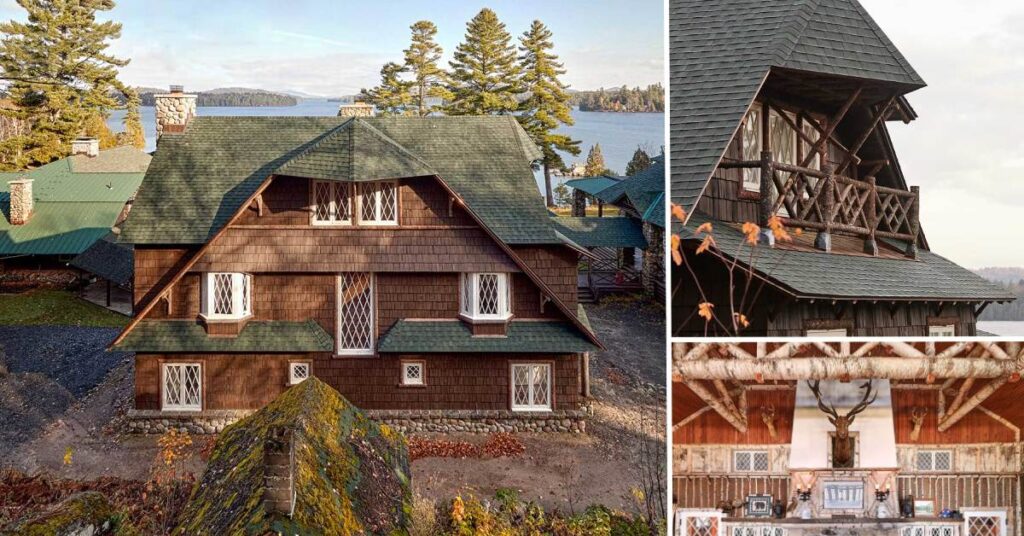
The 1970s to Present Day
At the same time that Americans were looking differently at how they traveled and where they spent their vacations, architecture trends were leaning away from the earthy, rustic vibes of the Adirondack Great Camps. Minimalism, bold statements, and rectilinear forms were in. But then, there was the Olympics.
The 1980 summer Olympics in Lake Placid put the Adirondack region – and subsequently the Great Camps – under a magnifying glass. The Wonundra Camp (now The Point Resort, the revamping of which Andrew Chary designed) opened to the public for the first time, and visitors here for the summer games were happy to become among the first guests.
In 1982, Great Camps of the Adirondacks was published; a second edition was published in 2020. Author Harvey Kaiser penned the original publication in large part as an effort to save Adirondack Great Camps. Many camps had been left to deteriorate, sometimes by owners who inherited the camp from a family member, and did not have the means to maintain it, or to deal with the complexities of ownership. Some camps ended up going to a nonprofit organization or to the State.
Thanks to the Olympics and the Great Camps book in the early 1980s, the pendulum swung back towards the creation and preservation of Adirondack Great Camps and the rustic style. In addition, the 1980s welcomed a flourishing economy, with individuals suddenly having the means to afford a second or summer home.
Attitudes surrounding protection of the environment, and the importance of historically significant buildings, continued to be of utmost importance for many through the 1980s and beyond. Ten Great Camps were added to the National Register of Historic Places between 1986 and 1987.
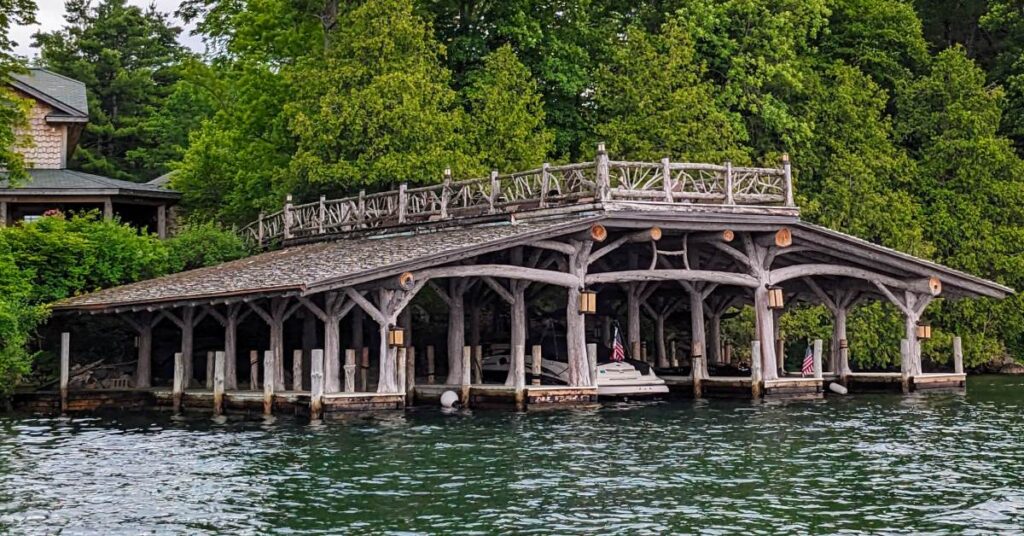
In 1990, the Adirondack Architectural Heritage was formed. This organization underwent a significant campaign to save the Santanoni Preserve and its historic buildings, which was ultimately successful; Santanoni was one of the earliest Great Camps, and is today the only Great Camp that is publicly owned.
The enthusiasm, interest, and passion surrounding Adirondack Great Camps that was ignited in the 1980s burned for the next 40 years. By 2015, the number of Great Camps increased from around 40, to about 65 or 70 facilities that can arguably be considered Great Camps.
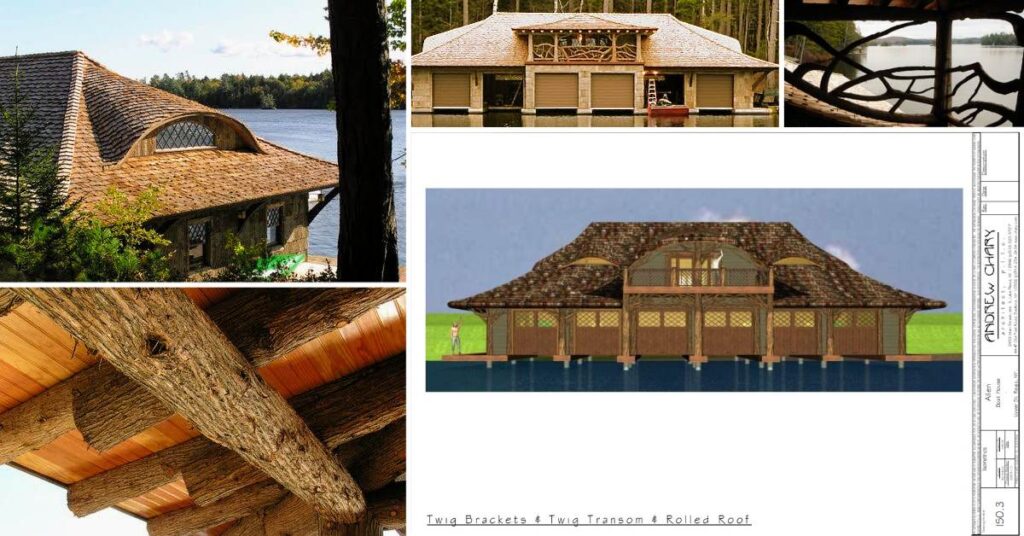
A Look at Adirondack Boathouses, Then & Now
As indicated above, boathouses were historically a crucial part of the Adirondack Great Camp experience, being one of a multitude of buildings within a Great Camp complex. The original boathouses were grand structures that owners used to store precious boats, and also to welcome and host guests. They typically included viewing decks and recreation rooms.
The Adirondack Park Agency reviewed boathouse regulations in 2002, and then again in 2010, when the organization decided to tighten the reins on restrictions regarding Adirondack boathouse designs. They essentially maintained that a boathouse was just that: a space for storing boats that has direct access to the water, and nothing more. Environmental concerns arose with regard to protecting the water quality, as well as the allure and aesthetic beauty of the Adirondacks.
The new regulations put a clamp on the location, design, and logistics of boathouses that are still in effect today. However, boathouses built before these guidelines are grandfathered in, and you may still see them along the shores of Adirondack lakes. Under the regulations, these structures may even be upgraded or repaired as necessary, as long as they are not expanded upon.
The conversation around Adirondack boathouse designs continues today. In 2023, Adirondack Explorer covered a story on the Adirondack Park Agency rejecting for the second time a request from two camp owners to build an addition on their boathouse on Spitfire Lake. But with the right architect, individuals can still have an exquisite boathouse tailored to their vision.
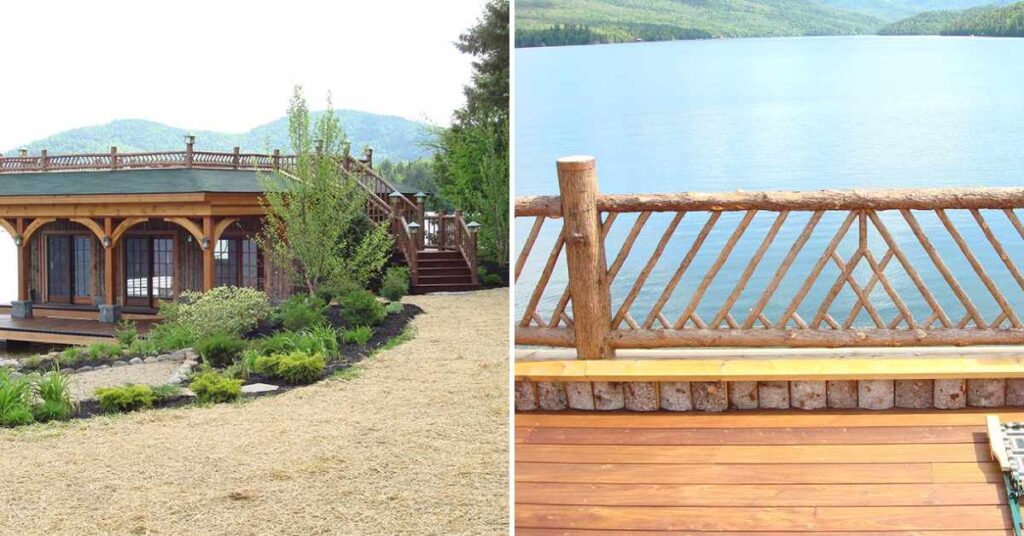
Interested in Creating Your Own Private Adirondack Camp or Boathouse?
Andrew Chary has decades of experience with Adirondack Great Camp designs, multigenerational homes, and more. His passion is to facilitate your passion for a unique home or space, tailored to your vision.
Just as the Great Camp designs incorporate all the little artistic details that make a place special, from twisted branch porch railings to exposed aggregate finishes, Andrew Chary uses these and other special features to elevate any custom designed space to your own
